Uppsala, a city rich in history and culture, is a treasure trove of historic landmarks and fascinating tales that stretch from before the Viking Age to the modern day. Here are seven fun history facts about our Swedish friends in Uppsala.
Our Scandinavian tour continues! For people who enjoy travel, living in Norway provides relatively easy opportunities to visit the other Scandinavian countries for a weekend break.
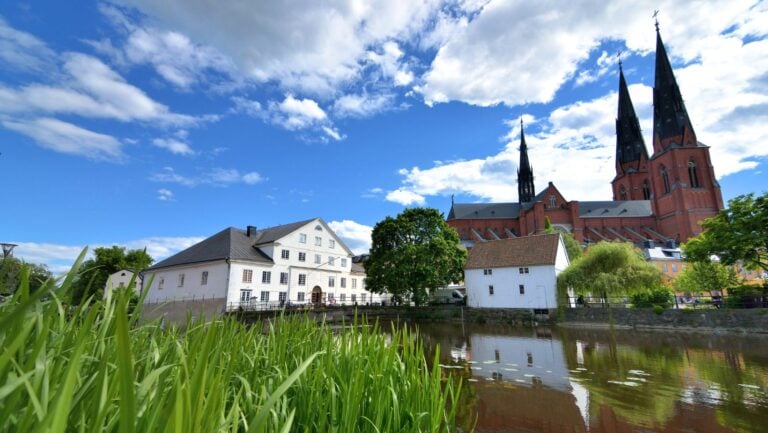
I recently took a trip to Stockholm, Sweden's capital city. As part of that trip, I took a short train trip north to spend some time in Uppsala. I wasn't entirely sure what to expect, but I had a great time, discovering a city full of historic interest.
The city not only hosts Scandinavia's oldest university but also stands as a symbol of Sweden's intriguing past. Uppsala's history blends scholarly intellect and ancient traditions, making it a good choice for those interested in exploring Scandinavian history.
My verdict? It's a fantastic choice for a day trip from Stockholm. To learn more, read on for seven interesting facts about the history of Uppsala.
1. The Famous Royal Mounds Pre-Date the Viking Age
The Royal Mounds of Gamla Uppsala, dating back to the 5th and 6th centuries, have long intrigued academics, locals, and visitors alike.
Initially speculated to be either natural formations or the resting places of gods or legendary kings, their true nature was revealed through excavations in the 19th century.
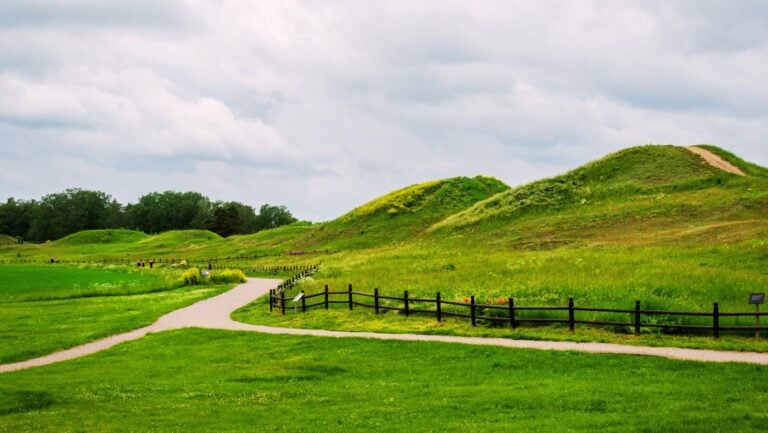
The first dig in 1830 uncovered a burial site, while a later excavation revealed more significant findings including warrior equipment and a man adorned in golden threads, dating back to the 6th century.
These mounds, confirmed as royal burial sites, are a prominent symbol of Sweden's ancient history.
Gamla Uppsala Museum tells the story of the burial mounds and the history of the time, but there's plenty of information given on info boards dotted around the site, too.
2. Rune Stones are Hidden in Plain Sight
The recent discovery of Viking ship graves in Norway has spotlighted the Viking Age's rich history. However, Sweden offers an accessible glimpse into Norse history with the world's largest collection of Viking rune stones.
Many of them are in rural locations across Sweden, but not all. Uppsala hosts a rare collection still standing in a modern urban area, so it's the best place to see rune stones in place if you rely on public transport.
These stones, dating from the 9th to 11th centuries, are memorials inscribed with runes. In Uppsala, a city brimming with history, these rune stones are prominently displayed, notably around the cathedral and neighbouring park.
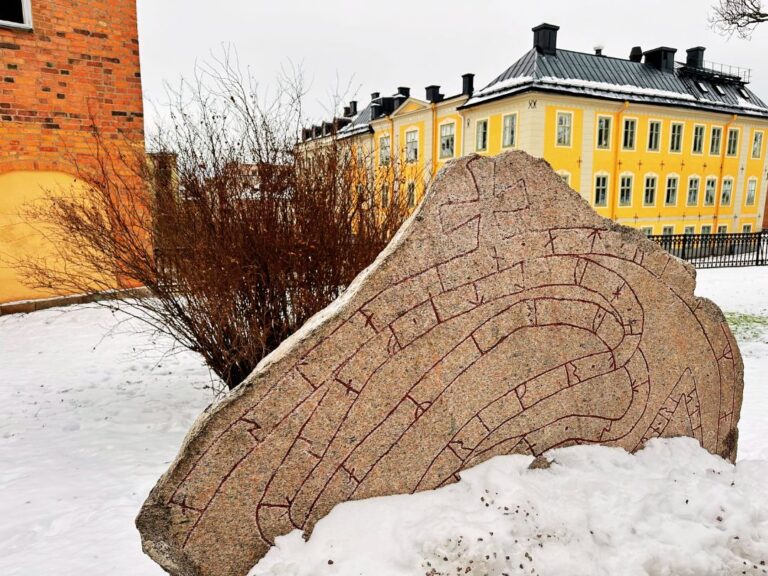
They provide insights into the transition from Norse mythology to Christianity, with many stones featuring Christian crosses yet also referencing Norse gods, reflecting the era's religious transformation.
3. Uppsala was the Religious Centre of the Norse World
Before the spread of Christianity, Uppsala was a pivotal religious centre for Norse beliefs. Local Swedes revered it as a site of worship, believing they descended from the god Freyr.
An 11th-century German church historian claimed that people gathered at a temple in Gamla Uppsala every nine years to make sacrifices.
The stories about the site, which claimed it to be the most important Pagan temple in the region, inspired the sacrificial temple depicted in the popular TV series, Vikings. Although of course, creative liberties were taken in the show!
After converting to Christianity, a stone church, retaining runic inscriptions, replaced the pagan temple, preserving this site's religious significance.
4. Uppsala Cathedral is the Tallest in the Nordics
Uppsala Cathedral, the tallest church building in the Nordic region, dominates the city's skyline. At a height of 118.7 metres (389 ft), it's well-known for its striking architecture but also holds significance as the national shrine of the Church of Sweden.
Designed in French Gothic style by architects including Étienne de Bonneuil, the cross-shaped church was mainly built between 1272 and 1420, with the western end and twin towers added in the 15th century.
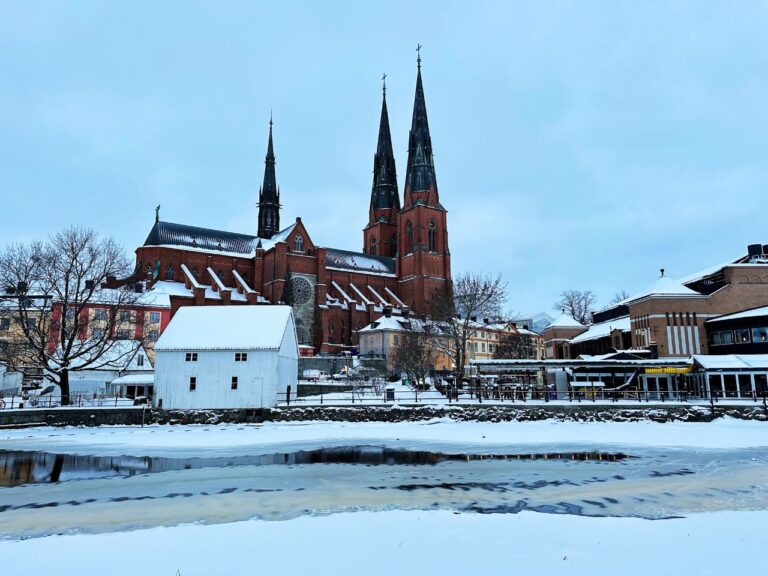
Following a 1702 fire, Carl Hårleman and later Helgo Zetterwall redesigned its spires. Constructed primarily of brick with Gotland limestone details, its vaults and medieval frescoes were completed and restored over centuries, complementing its historical furnishings housed in the Treasury Museum.
The long opening hours and free entry also make the religious building unusually accessible to tourists. Note that entry to the Treasury Museum does require a small fee.
5. The City is Home to Scandinavia's Oldest University
Founded in 1477, Uppsala University is the oldest in Scandinavia. It has been a centre of education and research for centuries, contributing significantly to the intellectual and cultural development of Sweden and beyond.
University buildings dot the city, especially to the south of the river, yet the historic buildings contrast with the youthful vibe given to the city by its yearly intake of students.
Part of the University, the anatomical theatre played host to some gruesome proceedings over the years. Fully restored to its original state, the theatre is now part of the Gustavianum Museum.
It also hosts the Augsburg Art Cabinet, an elaborate, 17th-century cabinet of curiosities.
6. Uppsala Hosts an Important Historical Archive
The Carolina Rediviva, part of Uppsala University Library, is home to a remarkable collection of historical manuscripts and texts.
This includes the 6th-century Silver Bible—a UNESCO-listed item of historical importance—and original works by the renowned botanist Carl Linnaeus, making it a cornerstone of historical and academic importance in Sweden.
7. The City Played a Key Role in Swedish History
Despite its relatively small size today, Uppsala has played a key role in Sweden's history over the years.
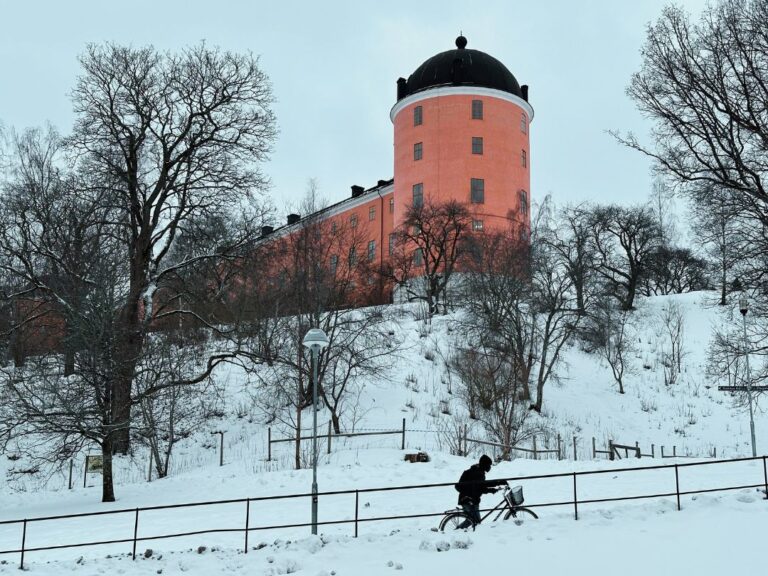
Since 1164, Uppsala has been the ecclesiastical centre of Sweden, being the seat of the Archbishop of the Church of Sweden. Until the late 19th century, the city's cathedral was usually the site of the coronation of Sweden's monarch.
The eye-catching, 16th-century Uppsala Castle, built by King Gustav Vasa, served as one of the royal residences of the Swedish monarchs. Today it plays host to an art museum and visitors can take an adrenaline-pumping walk on the rooftop for a spectacular view.
The impressive landmark was expanded several times throughout its history, which helped make Uppsala the secondary capital of Sweden during the height of the Swedish Empire.
Uppsala Travel Tips
If you're considering a visit to Uppsala, it's very straightforward to visit from Stockholm. The city is just a 40-minute ride from the capital, with tickets varying from SEK 75-150.
Buses in the city are run by UL, which has good English language information on its website. Download the UL app in advance if you're planning on using the bus, for example to get to Gamla Uppsala.
There are several good standard hotels in the city, but you may prefer to stay in Stockholm if you're only visiting for a short time.
Have you ever been to Uppsala, Sweden? What were your experiences? I'd love to hear from you in the comments.



Hi David,
I visited Uppsala on my very first day in Scandinavia. The mounds in Gamla Uppsala are interesting. The Univeristy and the church are lovely. The Linnaeus Garden is a must see. Walking this city brings everything into context. I would also suggest a side trip to Sigtuna, as this is the genesis point for modern Scandinavian culture. Cheers!